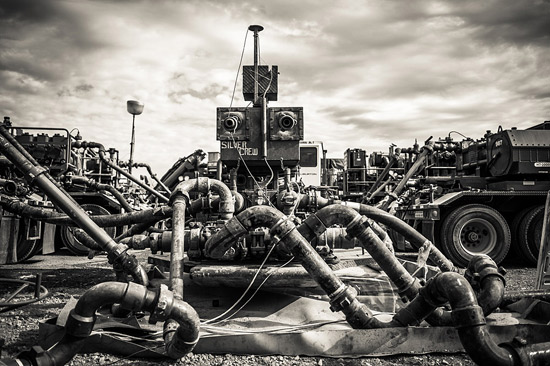
"This is what fracking looks like from the surface. The pipes leading into the well head are connected to the trucks in the background. These trucks force water mixed with proppant - sand and tiny ceramic balls that keep the cracks propped open (hence the name) so that oil can flow towards the well pipe - and chemicals down into the well at 10,000 PSI." - John Mireles
The Bakken formation is a rock unit from the Late Devonian to Early Mississippian age occupying about 200,000 square miles of the subsurface of the Williston Basin, underlying parts of Montana, North Dakota, Saskatchewan and Manitoba. Oil was first discovered within the Bakken in 1951, but past efforts to produce it have faced technical difficulties. Hydraulic fracturing and horizontal drilling technologies have caused a boom in Bakken production since 2000 and the area has emerged in recent years as one of the most important sources of oil in the United States.
Oil production has now outstripped the capacity of the pipelines to ship the oil out. It was Bakken crude oil carried by train that caught fire in the Lac-Megantic derailment in Quebec last year.
In John Mireles' series he combines portraits, landscapes and documentary imagery to tell us about this oil boom in North Dakota.
